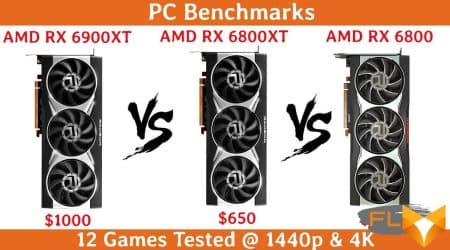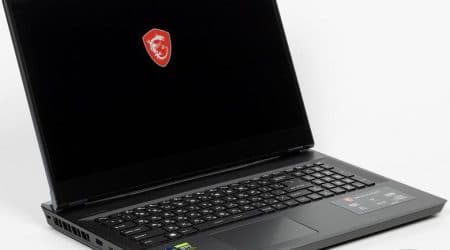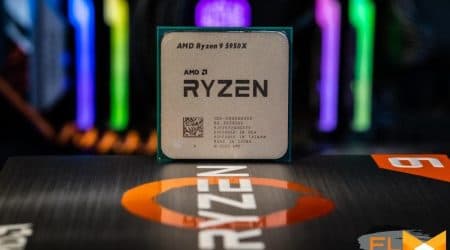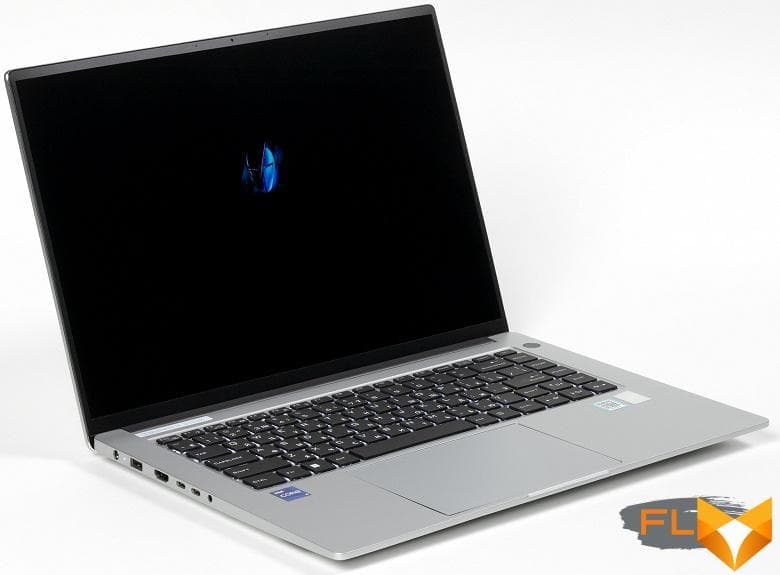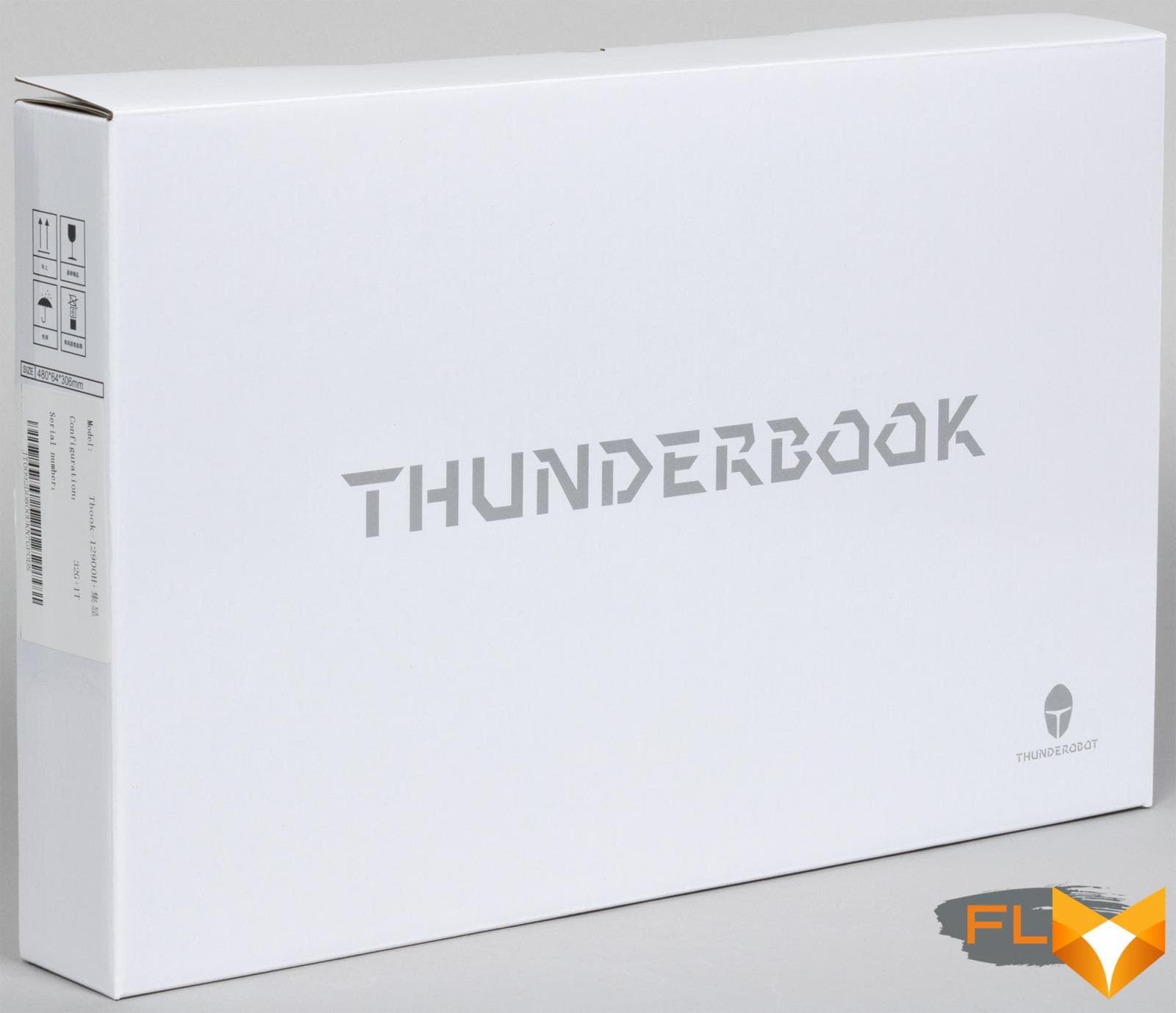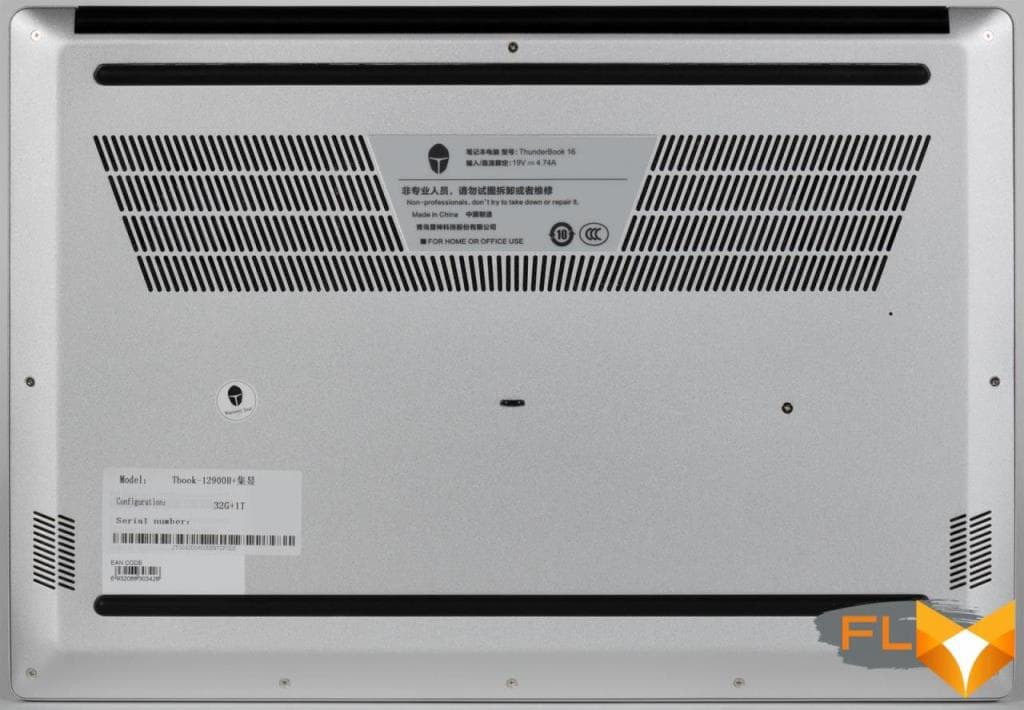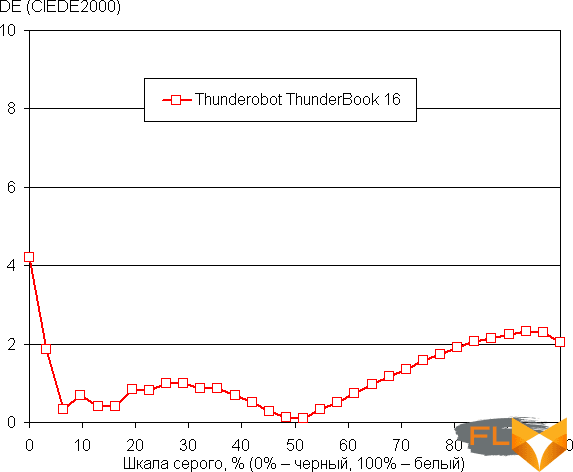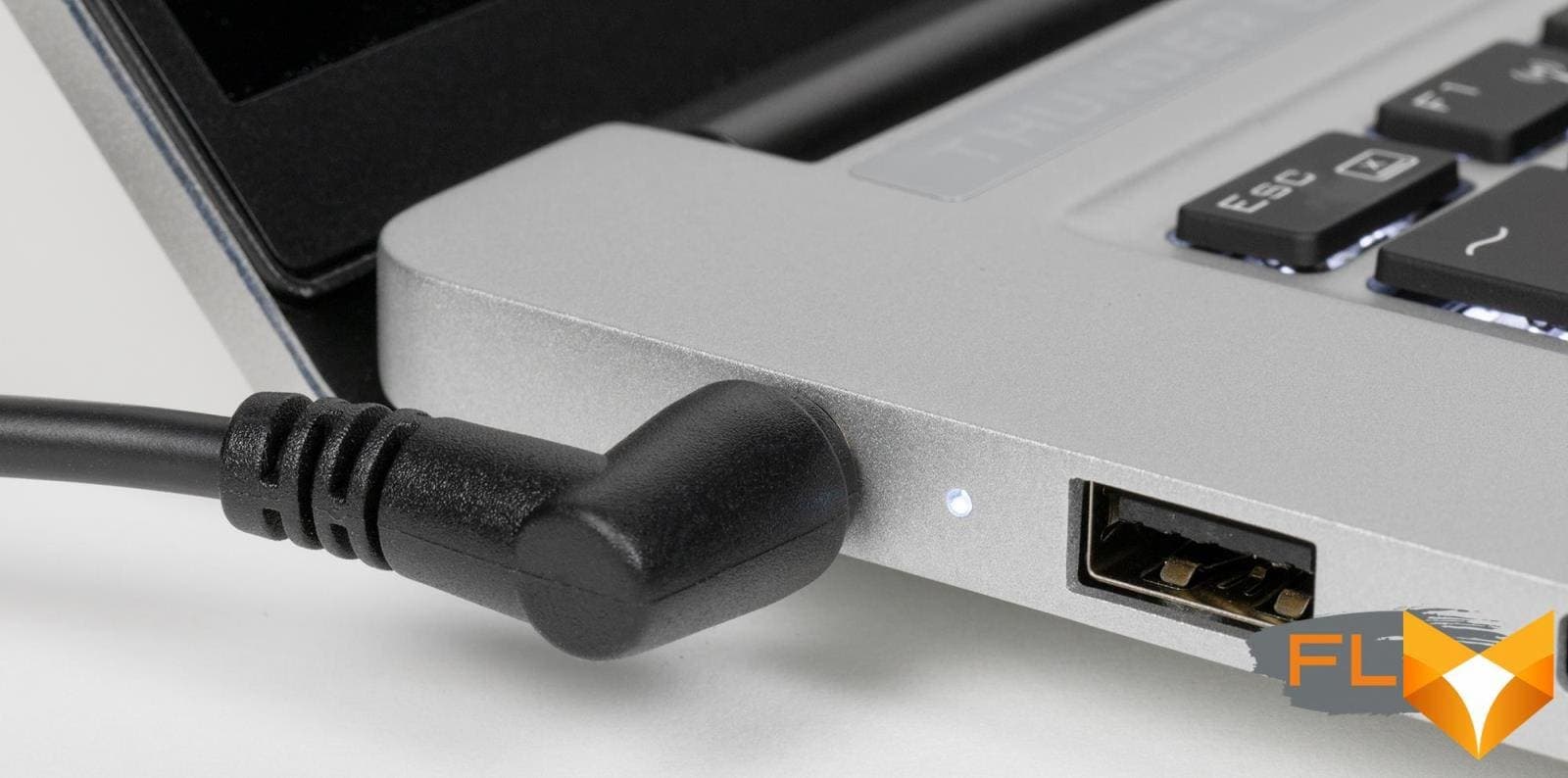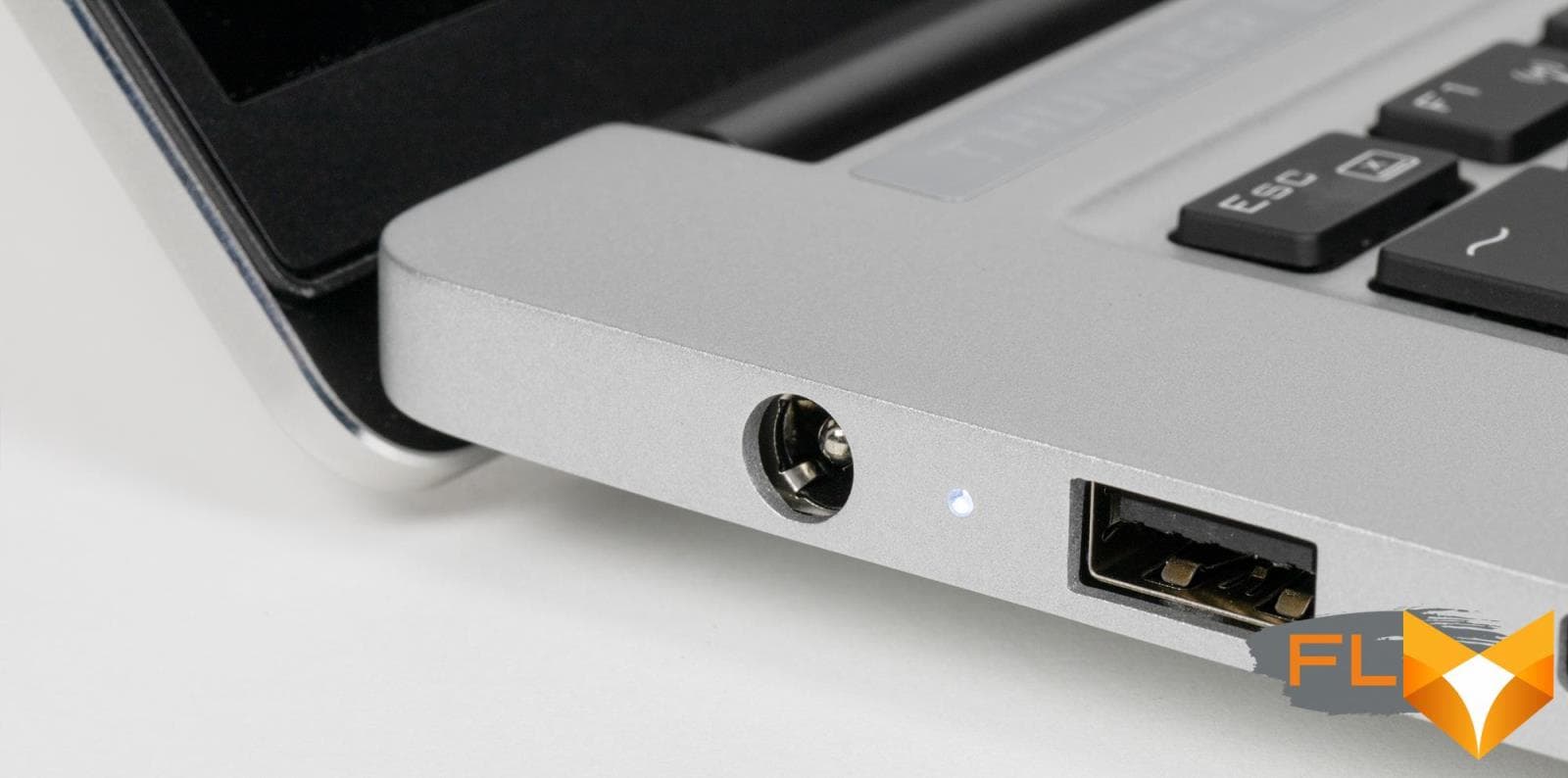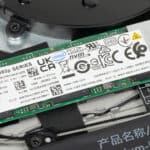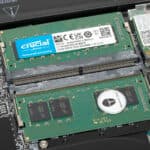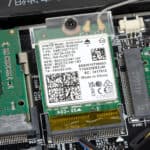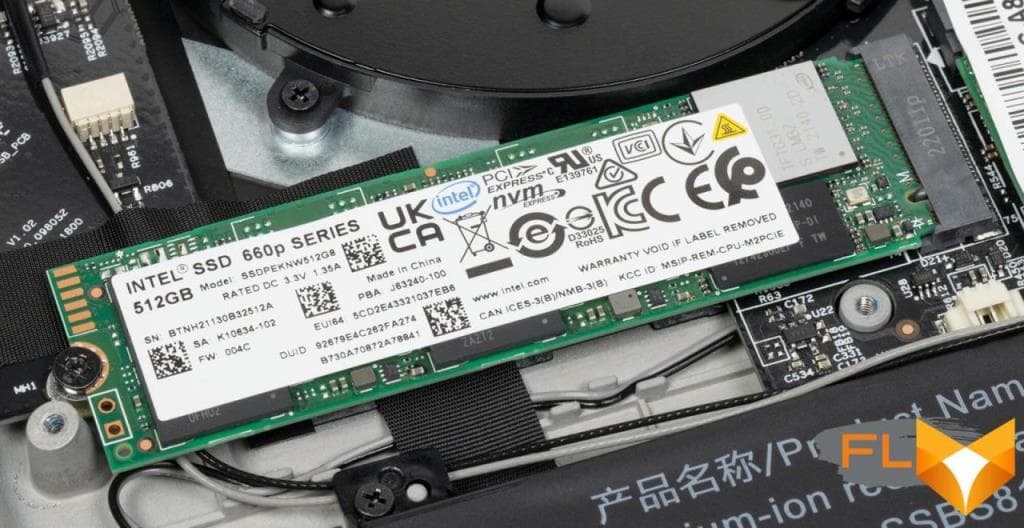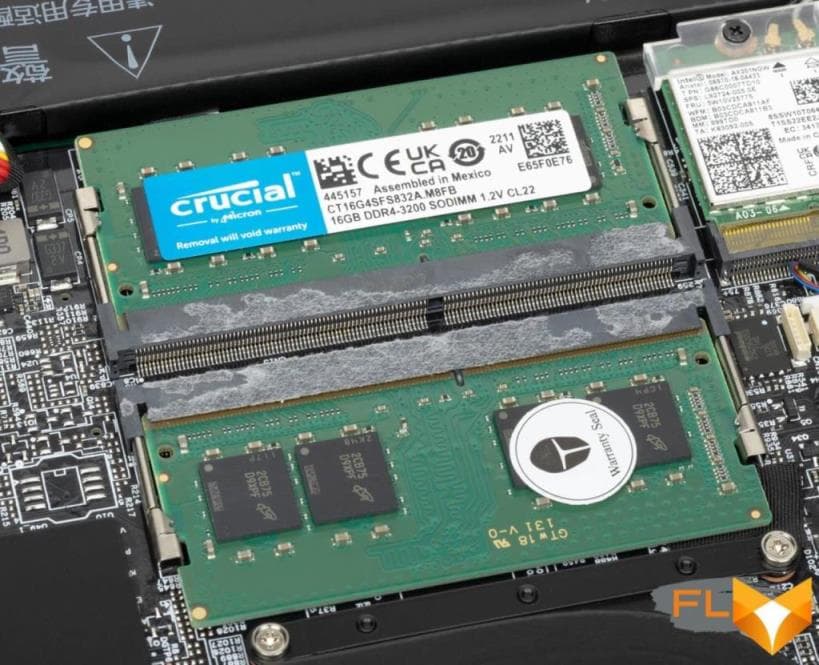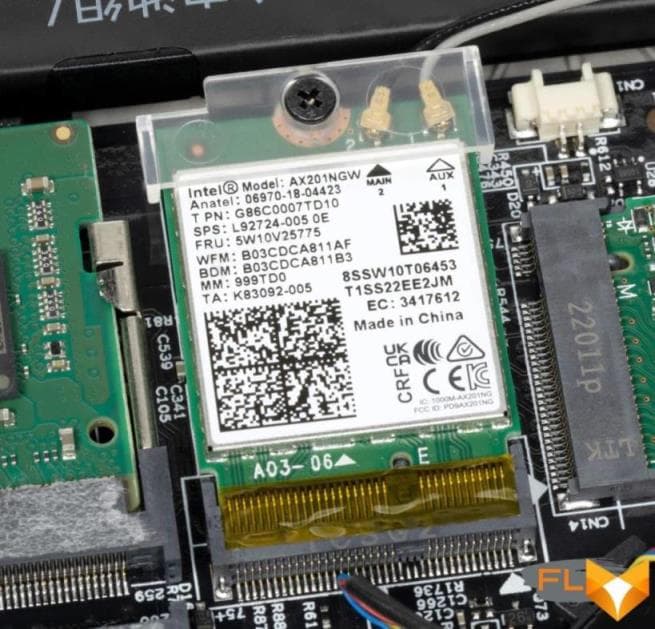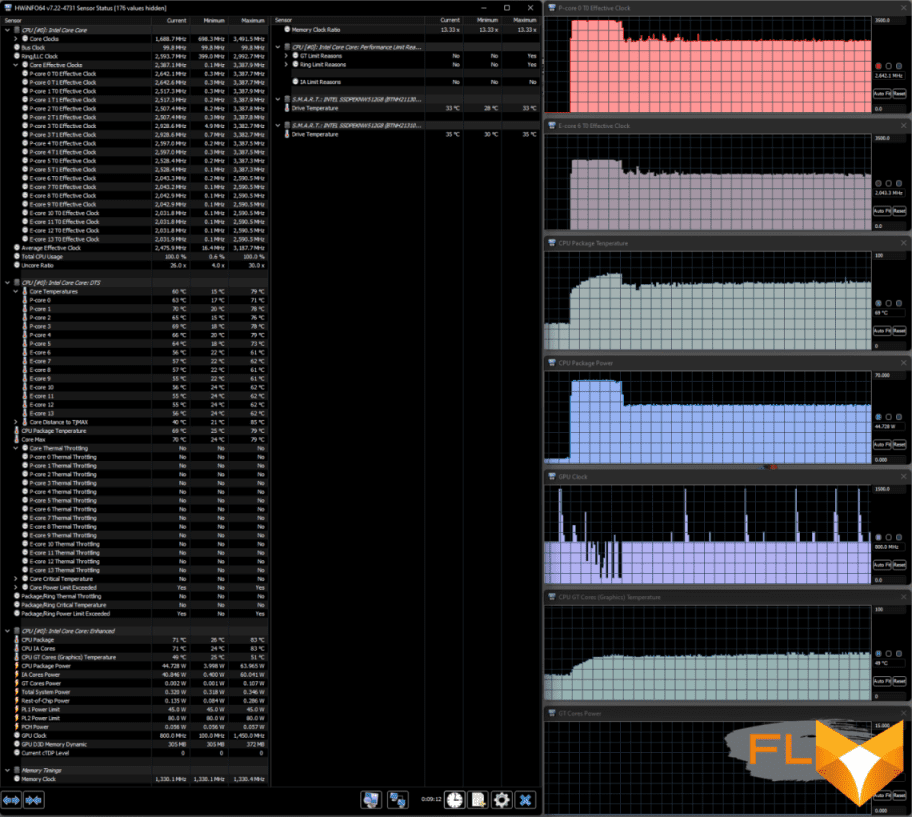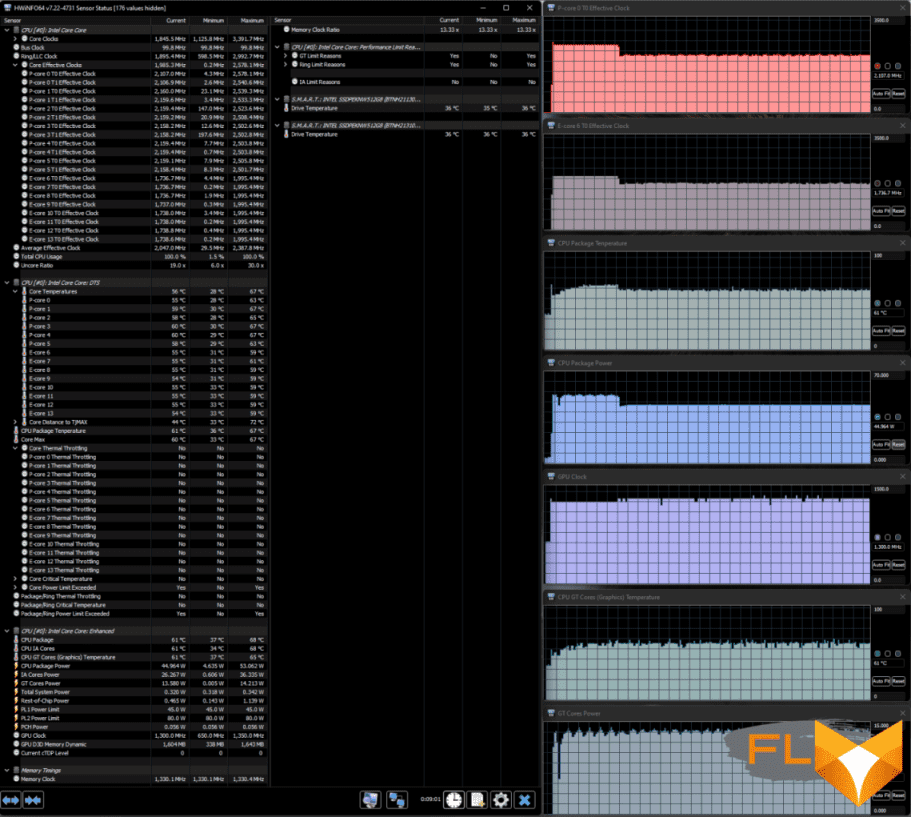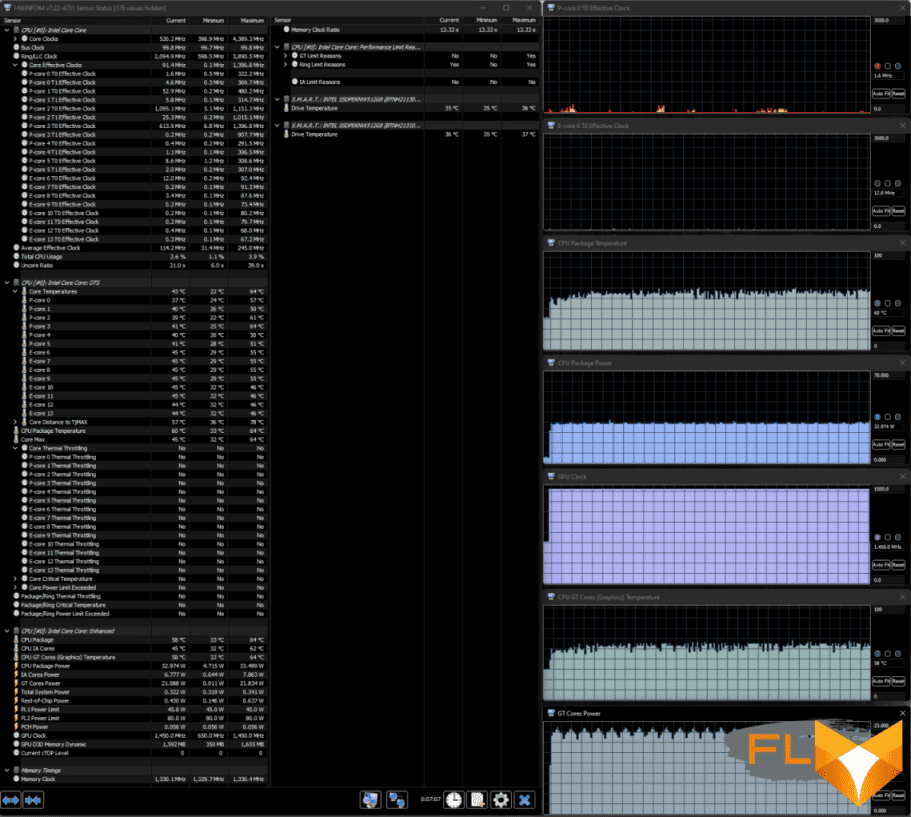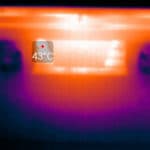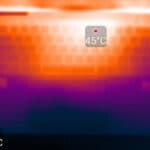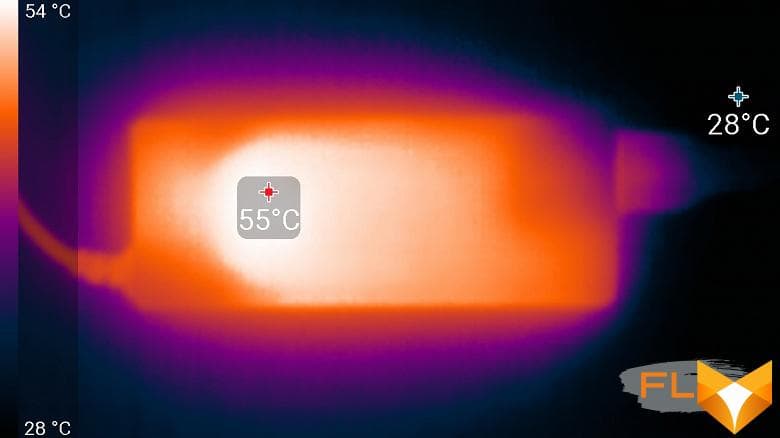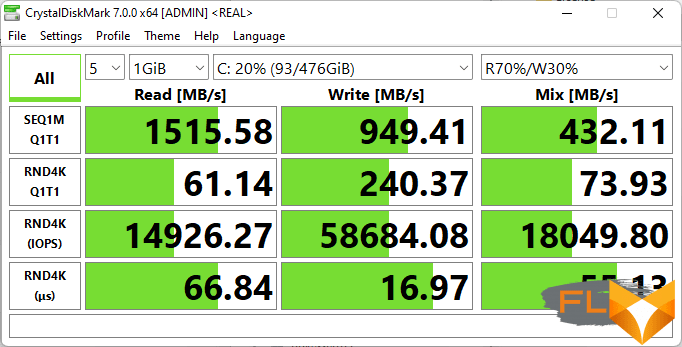


We already got acquainted with Thunderobot laptops manufactured by the Chinese company Haier Group on the example of the 911 Air D gaming model, and now we present to your attention a device from the Thunder Book line, which should be classified as a business -laptops, and can be called an ultrabook.
It is difficult to understand exactly how this line is positioned by the manufacturer himself: it is not mentioned on official resources with European languages, information is available only in Chinese. At the same time, there is no unity even with the name: the site uses the naming “T-book” (with a hyphen), the nameplate on the top cover of the laptop has the inscription “Thunder Book” (two words), while the stickers on its bottom and the inscriptions on the boxes report “Tbook” and “ThunderBook” (fused spelling). In addition, the name “TBook16” (or “TBook 16”) may also occur.
Those who do not speak Chinese can basically understand the following: the processors of all Tbooks offered today are the same (Intel Core i9-12900H, they are today considered one of the top laptops), there are two screen options – 14 and 16 inches, and for each of them there are modifications with different configurations (RAM, drives, even a video card – for it the choice is between the integrated Intel Iris Xe and the discrete Intel Arc A370M).
It’s impossible to make out anything else: it’s often impossible to even “copy-paste” into an Internet translator – most of the information is presented not in “clean” text, but in inscriptions on illustrations, moreover, the compilers of such pages on Chinese sites bother themselves with specifications in the usual form not always (apparently, considering them boring – pictures are more fun to look at). And this is very annoying: a number of important parameters and features remain behind the scenes; Of course, we were able to clarify something, but not everything and not always with absolute certainty.
A section for downloading drivers is also available, but its pages are also in Chinese. You have to sort it out either by the names of the downloaded files (they are written in Latin), or by dragging Chinese inscriptions into the translator, since there is such an opportunity here.
It remains to be hoped that over time the situation will improve and at least some information about the line will appear in official sources in English.
Configuration and equipment
We tested a Thunderobot Thunder Book 16 laptop with a 12th Gen Intel Core i9-12900H processor, 32GB RAM, 1TB storage, integrated graphics, 16-inch IPS screen with a resolution of 2560×1600, battery 70 Wh. On a well-known Chinese Internet site, it was offered at a price of about 100 thousand rubles, taking into account temporary discounts, there was also a cheaper option – with 16 GB of RAM and a 512 GB SSD for 90 thousand.
Its specs look like this:
| Thunderobot Thunder Book 16 | ||
|---|---|---|
| Processor | Intel Core i9-12900H (6+8 cores/20 threads, up to 3.8/5.0GHz, 45-115W) | |
| RAM | 32 GB DDR4-3200 (2 × Crucial CT16G4SFS832A.M8FB in SO-DIMM slots) | |
| Video subsystem | Intel Iris Xe Graphics (Alder Lake-P GT2) | |
| Screen | 16″ 2560×1600 (16:10) IPS (CSOT T3 MNG007DA1-A) 120Hz | |
| Sound subsystem | Realtek, 2 speakers | |
| Accumulator | 2 × SSD 512 GB (Intel 660p (SSDPEKNW512G8), M.2 2280, NVMe, PCIe 3.0 x4) | |
| Card Reader | none | |
| Network interfaces | Wired network | none |
| Wi-Fi network | Wi-Fi 6 (Intel AX201NGW IEEE 802.11a/b/g/n/ac/ax, 2.4 and 5.0 GHz, MIMO 2×2, channel width 160 MHz) | |
| Bluetooth | Bluetooth 5.3* | |
| Interfaces and Ports | USB | 2 × USB3 Gen2 Type-C supporting data transfer, PD power and DisplayPort graphics output 3 × USB3 Gen1 Type-A |
| RJ-45 | none | |
| Video outputs | 1 × HDMI 2.1 2 × DisplayPort 1.4a (USB Type-C) | |
| Audio connectors | 1 combined headset (minijack) | |
| Input Devices | Keyboard | backlit |
| Touchpad | clickpad | |
| VoIP | Webcam | 720p |
| Microphone | there are (two) | |
| Fingerprint reader | none | |
| Battery | 70 Wh Lithium Ion | |
| Dimensions | 356×246×21 mm (minimum thickness 18 mm) | |
| Weight without power supply | 1.75 kg | |
| Power adapter | 90 W (19 V, 4.74 A), weight 0.43 kg (with cable) | |
| Operating system | Windows 11 Pro (21H2) | |
*In the device properties, the LMP value is 5.3, although the official description of the installed Intel wireless module is 5.2.
The device comes with Windows 11 Pro installed on one of its drives, the second one is completely free. There is no additional software, like the proprietary Control Center utility familiar to us from the Thunderobot 911 Air D laptop mentioned above. As far as we could understand, it is not offered for this model and at the link provided earlier.
The product is packed in two cardboard boxes (one inside the other for better preservation) without carrying handles.
In the kit, in addition to the laptop itself, there is only a power supply with a replaceable input cable (length 1.4 meters, there are two of them with different plugs) and a soldered output cable (1.5 m), as well as two small books with information in Chinese.
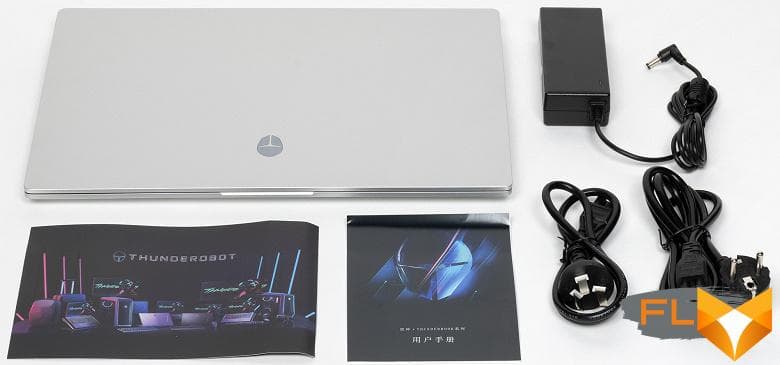
Appearance and ergonomics
The color of the device is light, silver-gray, the lid and both body panels are metal, the texture of the surfaces is matte with a hint of light roughness (they get dirty rather quickly). The design is strict, concise, without conspicuous decorations.
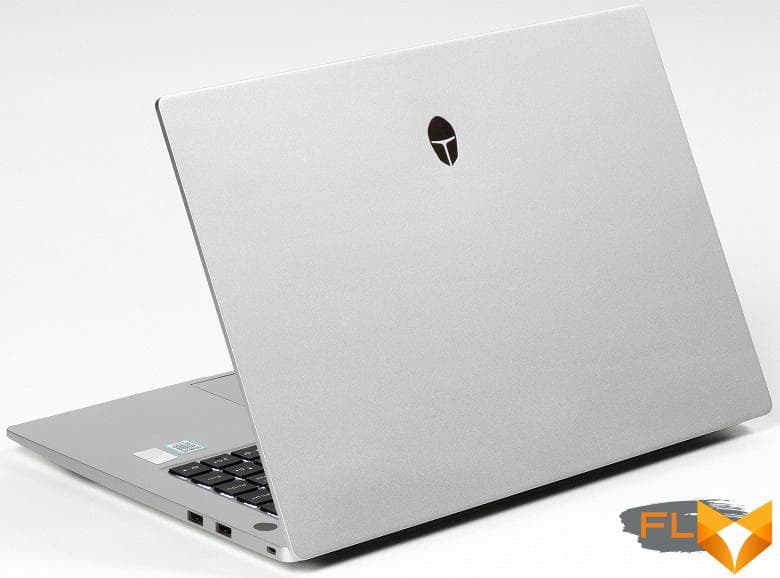
Thanks to the bevels at the front and side edges, the device looks thinner than it actually is, and the declared value of the thickness of 17.8 mm was confirmed as the minimum during measurements, we will only clarify: with the legs in front it turns out 19.4 mm, back 21.3 mm . The length and width are not mentioned in official sources, our measurement is included in the table.
The design turned out to be quite rigid: the panels flex slightly even with fairly strong pressure, only the torsional strength of a thin cover with an LCD screen leaves much to be desired.

The black plastic frame around the screen is quite thin: 3.9 mm on the sides, 7.1 mm at the top (there is a webcam with an indicator, but without a shutter, and microphones), 9.7 mm at the bottom to the bend of the lid covering the hinges. On three sides, an outer plate adds about a millimeter, but visually this does not increase the thickness of the frame due to the contrast of colors (black and silver).
On the bottom, in addition to the legs stretched across the entire width (plus a small additional support in the geometric center), closer to the rear edge there is an area with many narrow ventilation slots, through which air is taken to cool the components, so you should not put the laptop on a soft surface.
At the rear end of the case there are a number of larger holes through which the ventilation system emits heated air. As often happens in such designs, the lower part of the screen is heated, but during the launch of “heavy” tests it turned out: not very strong.

The stereo speaker grilles are located at the bottom left and right, closer to the leading edge.
The lid with the screen opens at an angle of up to 170 degrees and is precisely fixed in any position, starting from 35-40 degrees (and closed too). At the same time, its lower edge never touches the table.

The force of the hinges is moderate, you can open the lid with one hand – you don’t have to hold the bottom part. For convenience, a small notch is made in the middle of the front edge of the case so that you can pick it up with your finger, in other places it is more difficult to do this.

On the right side, there is a Kensington lock hole and two USB3 Gen1 Type-A ports.

On the left, the set is richer: a power socket with an indicator, another USB3 Gen1 Type-A port, a full-size HDMI, as well as a pair of USB3 Gen2 Type-C ports and a combo mini-jack for an audio headset. The indicator lights up white when turned on, blinks slowly in sleep mode or when charging without turning on the laptop, blinks quickly when there is little remaining charge; in the normal position of the operator, this indicator is not visible, you have to look from the side.

There is uncertainty about USB-C ports: there is no marking near them on the case, and in the available materials they are marked as USB 3.1 without additional definitions.
In the description, you can still see the letters PD among the hieroglyphs, and in another illustration, more or less understandable “… 10min … 1.5h” with other hieroglyphs are added to them – most likely, this means that something like “charge 10 minutes and run 1.5 hours”. We won’t even check the last statement – the concept of “working” is too vague, but we tried Power Delivery: yes, you can connect an external adapter with support for 20-volt PD mode to any of these ports to power a laptop. Below we find out how much power is desirable in this case.
The test showed: the video signal (DisplayPort protocol) is output through both of these connectors. As for the Thunderbolt interface, it is possible to enable and disable it in the BIOS, and the default setting is Disabled, and when set to Enabled, a new line does not appear in the Windows Device Manager. In addition, if this fashionable “feature” was in a laptop, then its mention in the description would be present one way or another, and it would be written in Latin, but this is not the case.
Neither a card reader nor an Ethernet port is provided. There is also no fingerprint scanner.

The keyboard is a membrane type with an island arrangement of buttons, without a numeric keypad. The indents along the edges are quite large – 29 mm each.
Most of the keys are of normal size (16×16 mm), the functional ones are smaller (14×8 mm), the left Shift key is wide, the right one is only slightly wider than the letter keys – 18 mm. But the buttons with the up and down arrows are the same: 18×16 mm, the same size for the keys of the far right row.
The distance between the centers of the buttons in one row is 19 mm, between their edges – 3 mm. Typing is quite comfortable, except that the pressing force is a little too big, and the sounds when typing are a little louder than we would like, but these are subjective sensations that you quickly get used to. The full travel of the keys is about 1.6 mm.

A switchable backlight is provided – white, with two levels; even at the maximum you can’t call it very bright. The built-in indicator is only in the CapsLock button to display the corresponding mode.

The round Power button is located on the right in the far corner of the top panel, and outside the keyboard and flush with the surface, which eliminates erroneous pressing.
As mentioned above, the webcam is located above the screen. Resolution at the level of budget laptops – 720p @ 30 fps.
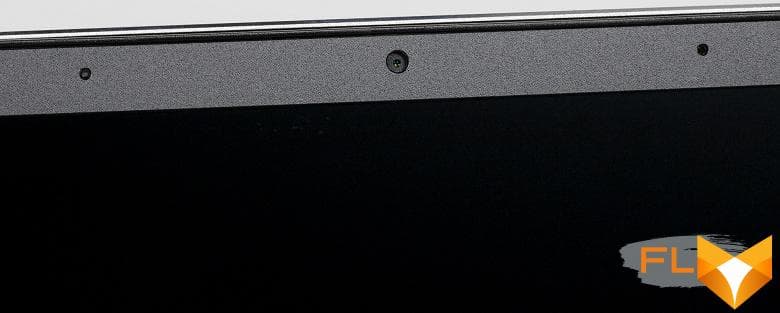
The touchpad is huge: 141×95 mm, without dedicated keys (but its left and right near edges may well work as corresponding mouse buttons), the surface is slightly recessed.
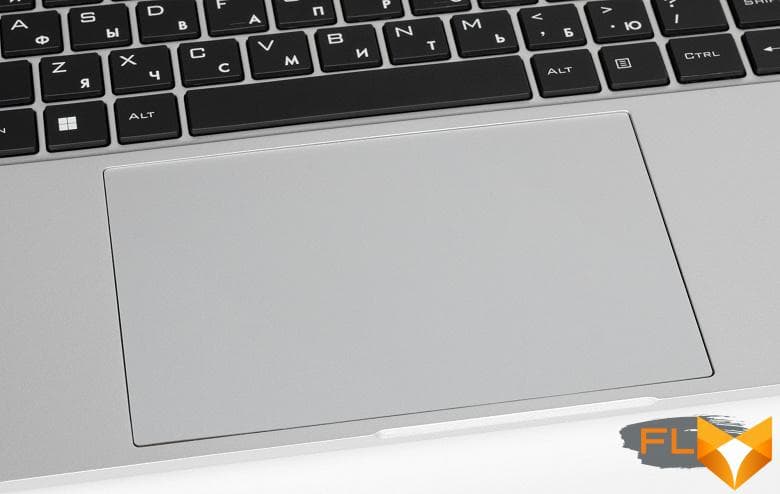
By itself, it is quite comfortable, but when typing with two hands, when the wrists are resting on the front of the top cover, accidental touches on its surface, followed by unpredictable pointer / cursor movement, are almost guaranteed. In such a case, a keyboard shortcut is provided to quickly disable the touchpad.
In our copy, the near left corner of the sensor plate was not fixed well enough, it periodically rose slightly and began to slightly protrude from the plane of the panel – very little, but upon closer examination, this can even be seen in the photographs. Pressing with effort returned this corner to its place, but only for a while, and then it again turned out to be raised; this did not interfere with work, but there are bad suspicions about the behavior in the future. It remains only to expect that this will not occur in other instances.
Screen
The Thunderobot Thunder Book 16 laptop uses a 16-inch IPS-matrix with a resolution of 2560 × 1600 pixels.
The outer surface of the matrix is black, hard and semi-matt (the mirror reflection is well expressed). There is no special anti-reflective coating or filter, and there is no air gap. When powered by mains or battery and with manual brightness control (no automatic adjustment by light sensor), its maximum value was 350 cd/m² (in the center of the screen on a white background). If you avoid direct sunlight, then this value allows you to somehow use the laptop on the street, even on a sunny summer day.
To evaluate the readability of the screen outdoors, we use the following criteria obtained from testing screens in real conditions:
| Maximum brightness, cd/m² | Conditions | Readability Score |
|---|---|---|
| Matte, semi-matte and glossy screens without anti-glare | ||
| 150 | Direct sunlight (over 20,000 lux) | illegible |
| Light shadow (about 10000 lux) | barely readable | |
| Slight shade and light clouds (no more than 7500 lux) | uncomfortable to work | |
| 300 | Direct sunlight (over 20,000 lux) | barely readable |
| Light shadow (about 10000 lux) | uncomfortable to work | |
| Slight shade and light clouds (no more than 7500 lux) | work comfortably | |
| 450 | Direct sunlight (over 20,000 lux) | uncomfortable to work |
| Light shadow (about 10000 lux) | work comfortably | |
| Slight shade and light clouds (no more than 7500 lux) | work comfortably | |
These criteria are very conditional and may be revised as data accumulate. Note that there may be some improvement in readability if the matrix has some kind of transreflective properties (part of the light is reflected from the substrate, and the image can be seen in the light even with the backlight turned off). Also, glossy matrices, even in direct sunlight, can sometimes be rotated so that they reflect something quite dark and uniform (on a clear day, for example, the sky), which will improve readability, while matte matrices need to be blocked from Sveta. In rooms with bright artificial light (about 500 lux), you can work more or less comfortably even with a maximum screen brightness of 50 cd / m² and below, that is, in these conditions, maximum brightness is not an important value.
Let’s return to the screen of the tested laptop. If the brightness setting is 0%, then the brightness is reduced to 7.6 cd/m². Thus, in complete darkness, the screen brightness can be lowered to a comfortable level.
At any brightness level, there is no significant backlight modulation, so there is no screen flicker (no PWM). As proof, here are graphs of the dependence of brightness (vertical axis) on time (horizontal axis) at various values of the brightness setting:
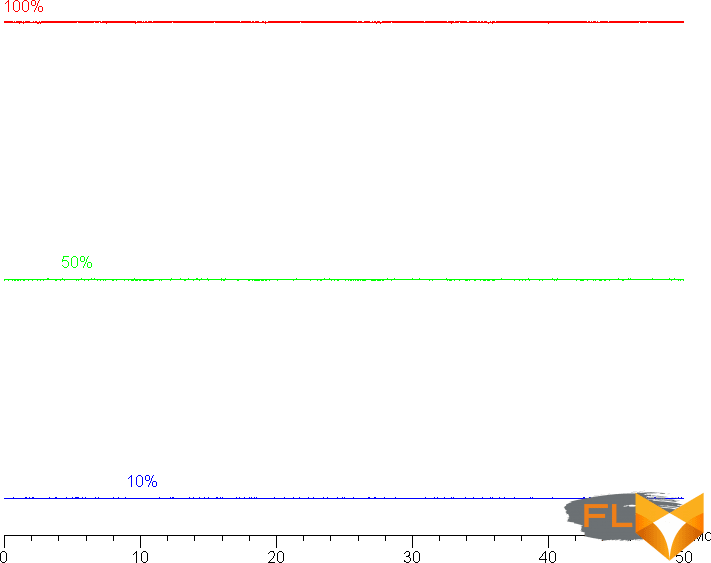
This laptop uses an IPS type matrix. Micrographs show a typical IPS subpixel structure (black dots are dust on the camera’s matrix):
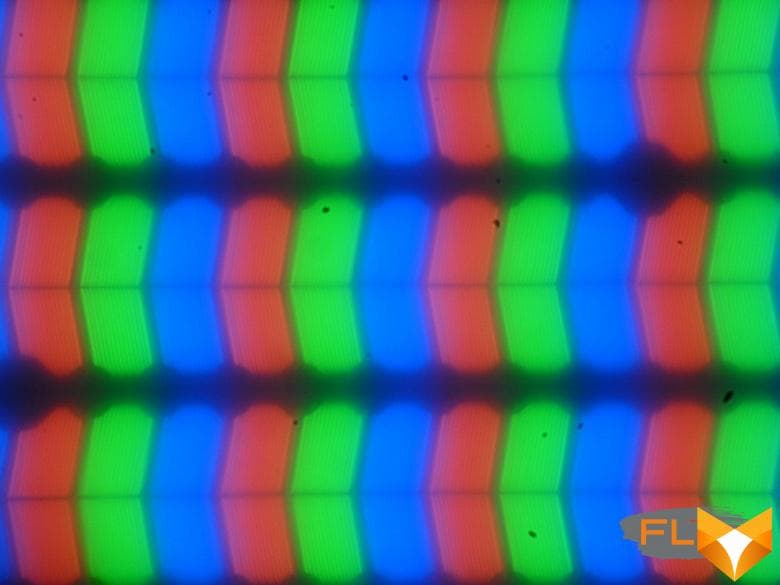
Focusing on the screen surface revealed randomly located surface microdefects, which are responsible for the matte properties:
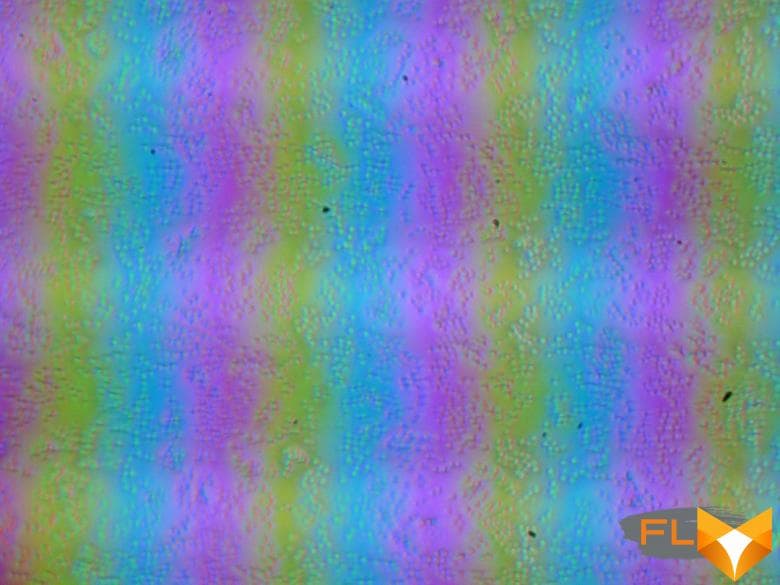
The grain of these defects is several times smaller than the size of the subpixels (the scale of these two photographs is approximately the same), so the focusing on microdefects and the “jumping” of the focus on the subpixels with a change in the angle of view are weakly expressed, because of this there is no “crystal” effect.
We measured brightness at 25 screen points spaced in 1/6th increments of the screen width and height (screen borders not included). The contrast was calculated as the ratio of the brightness of the fields at the measured points:
| Parameter | Average | Mean Deviation | |
|---|---|---|---|
| min., % | max % | ||
| Black box brightness | 0.31 cd/m² | −12 | 11 |
| White box brightness | 350 cd/m² | −9,3 | 4,7 |
| Contrast | 1100:1 | −11 | 4,4 |
If you step back from the edges, then the white field uniformity is very good, and the black field and, as a result, the contrast, is slightly worse. Contrast, by modern standards, for this type of matrices is slightly higher than typical. The photo below gives an idea of the distribution of the brightness of the black field over the screen area:
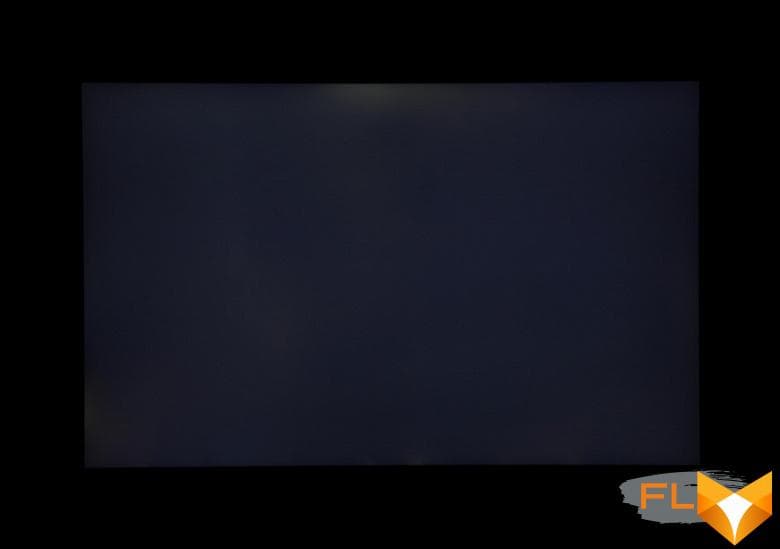
It can be seen that the black field is brightened in places, mostly closer to the edges. However, the uneven illumination of black is visible only on very dark scenes and in almost complete darkness, it should not be considered a significant drawback.
The screen has good viewing angles without a significant decrease in brightness and color shift even at large deviations of the gaze from the perpendicular to the screen and without inverting shades. However, the black field, when deviated diagonally, is strongly highlighted, although it remains conditionally neutral gray in hue.
Black-White-Black transition response time is 9ms (4.5ms on + 4.5ms off), transition between grayscales total (from hue to hue and back) in takes an average of 13 ms. The matrix is fast, but there is no explicit overclocking.
Let’s see if this matrix speed is enough to display an image at a frequency of 120 Hz. Here is the dependence of brightness on time when alternating white and black frames at 120 Hz frame rate (and at 60 Hz for comparison):

It can be seen that at 120 Hz the maximum brightness of the white frame is above 90% of the white level, and the minimum brightness of the black frame is reduced to the black level. The resulting amplitude swing is greater than 80% of the white brightness. That is, according to this formal criterion, the matrix speed is sufficient for a full-fledged image output with a frame rate of 120 Hz.
For a visual representation of what such a speed of the matrix means in practice, and what artifacts can be caused by overclocking the matrix, we present images taken with a moving camera. Such pictures show what a person sees if he follows with his eyes an object moving on the screen. The description of the test is given here, the page with the test itself is here. The recommended settings were used (motion speed 960 pixels/s), shutter speed 1/15 s. The pictures were taken for frame rates of 60 and 120 Hz.
At a frame rate of 120 Hz, motion clarity is high, there are no artifacts.
Let’s try to imagine what would happen in the case of a matrix with instant pixel switching. For it, at 60 Hz, an object with a motion speed of 960 pixels / s is blurred by 16 pixels, and at 120 Hz, by 8 pixels. Blurred because the focus moves at the specified speed and the subject remains stationary for 1/60 or 1/120 of a second. To illustrate this, let’s simulate blurring at 16 and 8 pixels:
It can be seen that the image clarity in the case of the matrix of this laptop is slightly lower compared to the ideal matrix.
We determined the total output delay from switching pages of the video buffer to the start of displaying the image on the screen (recall that it depends on the features of the Windows OS and the video card, and not only on the display). At a refresh rate of 120 Hz, the delay is 6 ms. This is a very small delay, it is absolutely not felt when working on a PC, and even in very dynamic games it will not lead to a decrease in performance.
Several refresh rates are available in the screen settings – 48, 60, 75, 100 and 120 Hz. The latter can be used not only in games, but also when watching movies. At least at native screen resolution, the output is at a color depth of 8 bits per color.
Next, we measured the brightness of 256 shades of gray (from 0, 0, 0 to 255, 255, 255). The graph below shows the increase (not an absolute value!) in brightness between adjacent halftones:
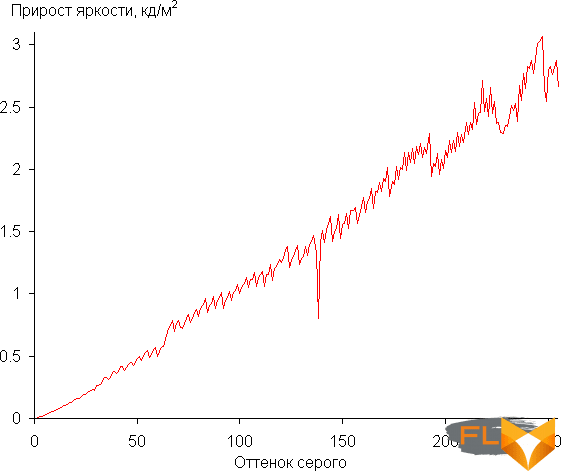
The increase in brightness gain on the gray scale is mostly uniform, and almost every next shade is brighter than the previous one. In the darkest area, hardware (within the margin of error) and visually, the first shade of gray does not differ in brightness from black. However, this does not spoil the overall picture:

Approximation of the resulting gamma curve gave an indicator of 2.09, which is lower than the standard value of 2.2, so the picture is slightly brightened. In this case, the real gamma curve deviates little from the approximating power function:
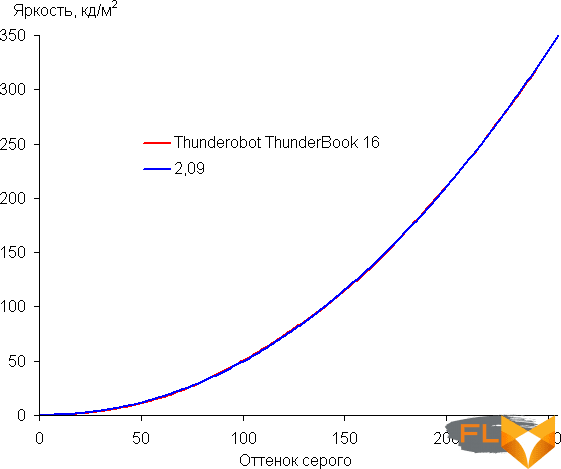
Color gamut close to sRGB:
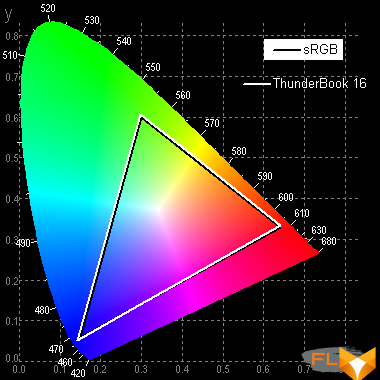
Therefore, visually, the colors of images oriented to output in sRGB space on this screen have a natural saturation. Below is the spectrum for a white field (white line) superimposed on the spectra of red, green and blue fields (lines of the corresponding colors):
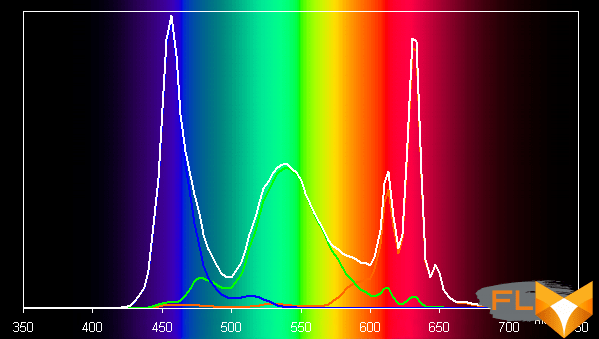
Apparently, this screen uses LEDs with a blue emitter and a green and red phosphor (usually a blue emitter and a yellow phosphor), which in principle allows you to get a good separation of the components. Yes, and in the red phosphor, apparently, the so-called quantum dots are used. However, specially selected filters perform cross-mixing of components, which narrows the coverage to sRGB.
The balance of shades on the gray scale is very good, since the color temperature is quite close to the standard 6500 K, and the deviation from the black body spectrum (ΔE) is below 3. At the same time, the color temperature and ΔE change little from hue to hue – this has a positive effect on the visual color balance evaluation. (The darkest areas of the gray scale can be ignored, since the color balance does not matter much there, and the measurement error of color characteristics at low brightness is large.)
Let’s summarize. The screen of this laptop has a high enough maximum brightness (350 cd/m²) to allow you to use the device outdoors on a bright day, shielded from direct sunlight. In complete darkness, the brightness can be reduced to a comfortable level (up to 7.6 cd / m²). The advantages of the screen include low response times (9 ms) and output latency (6 ms), high refresh rate (120 Hz), very good color balance and color gamut close to sRGB. The disadvantages are the low stability of black to the deviation of the gaze from the perpendicular to the plane of the screen. In general, the screen quality is high.
Sound
As noted above, the stereo speaker grilles are located on the left and right on the bottom, closer to the front edge, and partially go into the side bevels of the case – probably, sound reflection from the surface on which the laptop is installed is implied.
When listening to music, watching movies and playing games, the sound is quite acceptable, without noticeable distortion, and not too loud, although the volume margin is quite enough for individual use.
The loudness of the built-in loudspeakers was measured while playing an audio file with pink noise. The maximum volume was 75.2 dBA, so among the laptops tested at the time of this writing (median 74.6 dBA), this laptop is slightly louder than average in terms of volume.
| Model | Loudness, dBA |
|---|---|
| MSI P65 Creator 9SF (MS-16Q4) | 83 |
| Apple MacBook Pro 16” | 79.1 |
| Huawei MateBook X Pro | 78.3 |
| HP ProBook 455 G7 | 78.0 |
| MSI Alpha 15 A3DDK-005RU | 77.7 |
| Dell Latitude 9510 | 77 |
| Apple MacBook Air (Early 2020) | 76.8 |
| Thunderobot Thunder Book 16 | 75.2 |
| MSI GE65 Raider 9SF | 74.6 |
| Asus ZenBook 14X OLED | 74.4 |
| Honor MagicBook Pro | 72.9 |
| Asus ZenBook UX425J | 67.5 |
| Lenovo IdeaPad 530S-15IKB | 66.4 |
The frequency response of pink noise shows that the range of reproducible frequencies is not wide:
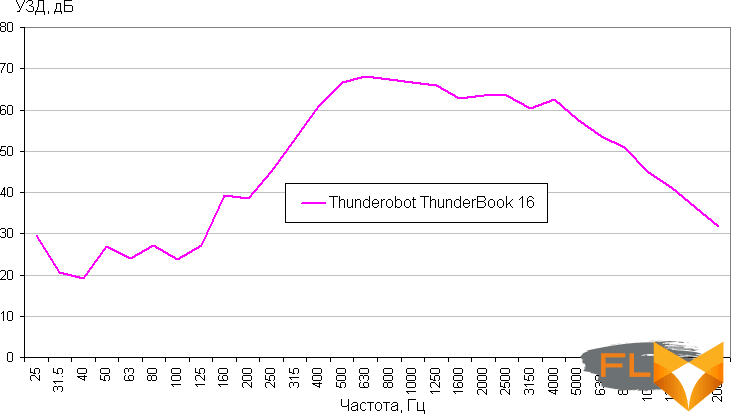
Battery operation
The declared battery capacity is 70 Wh.
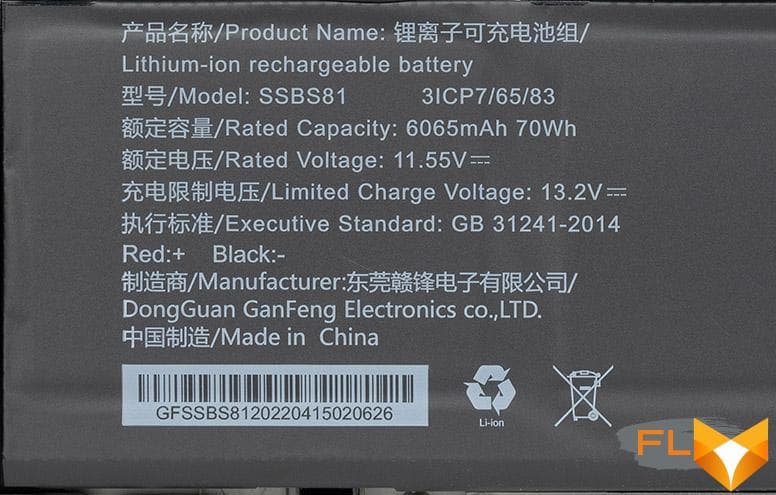
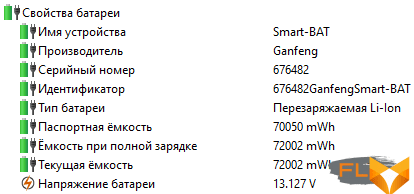
The manufacturer does not provide information (even approximate) on the possible battery life. As usual, let’s try it ourselves.
It is clear that when measuring, a lot depends on the methodology, so let’s see what our tests show. The screen brightness is set to 100 cd/m² (in this case, about 28% in this case), so laptops with relatively dim screens don’t benefit.
| Load Scenario | Opening hours |
|---|---|
| Discharge from 100% to 1% | |
| Working with text, keyboard backlight off | 8 hours 46 minutes |
| Working with text, keyboard backlight turned on to the maximum | 6 hours 30 minutes |
| Watching video, keyboard backlight off | 6 hours 45 minutes |
| Watching video, keyboard backlight set to maximum | 5 hours 44 minutes |
The results are average: for office applications, the charge is enough for the whole working day, but only when the key backlight is turned off, the screen brightness is not the highest, and the “cut-off” is very small at 1%, and failure to comply with just one of these conditions – activating the keyboard backlight – is significant reduces autonomy. And you can’t write it off for a small battery capacity: it’s not so small.
There are no settings that allow you to limit the level of charge and, accordingly, affect autonomy.
An unpleasant thing was noticed: a couple of times during battery operation, the indications of the remaining charge in both the corresponding Windows snap-in and in AIDA froze at a certain level (94 or 97 percent) and did not change until the power was turned off, and there were no notifications about a small and critical remaining charge It was. At the same time, the counter can only be “moved from its place” by rebooting the OS, which is not always desirable. Given the short period of our communication with a laptop, twice is already a trend, and again it remains to be hoped that this is inherent only in our copy.
Now about mains power, for which two options are possible: using an adapter from the kit or an arbitrary memory device with support for 20-volt Power Delivery mode. Since 100-watt PD adapters are not commonly found today, we took the less powerful and more common – 60 watts (20V@3A).
The maximum current we noticed when working from a standard PSU when running applications that require a lot of computing power while simultaneously charging the battery was 4.4-4.5 A, that is, slightly less than the declared maximum of 4.74 A. From the PD adapter, the consumption is noticeable more modest, but also falls short of its limiting value: no more than 2.7-2.8 A under the same conditions.

The charging time is not mentioned in the official materials, we made the measurements ourselves: after discharging the battery until it turned off at a balance of 1%, with the laptop turned off, we recorded the time for the two power options mentioned above twice, controlling the consumption through the corresponding connector.
From a standard adapter: the initial current was 2.6 A, within 50 minutes it slowly increased to 2.9 A, then a fairly rapid decline began: after 1 hour and 10 minutes from the start of charging – up to 2.2 A, over the next half an hour – to 0.8 A. Further, the rate of decline decreased, after 2 hours 45 minutes from the beginning, the current was 0.2 A, and after another 2-3 minutes it dropped to a couple of tens of milliamps, that is, a full charge took 2 hours 48 minutes.
From the 20V @ 3A PD adapter, the picture is very similar, but with noticeably lower current values and greatly extended in time: at the beginning it was only 1.6 A, after 1 hour 45 minutes there was a maximum of 1.8 A, then a decline, and the value was 0.2 A was achieved only after 3 hours and 15 minutes, and almost complete zeroing of the input current – even after 3 hours and 43 minutes.
That is, it is quite possible to charge from a 60-watt PD adapter, but for an hour longer.
Now the same thing with the laptop turned on: only the OS is loaded, the screen brightness is 100 cd / m² (28%), the keyboard backlight is at maximum. We monitor not the current, but the percentage of charge in the corresponding Windows snap-in.
When powered by a standard adapter, the value of 60% was reached in 1 hour 46 minutes, 80% in 2 hours 24 minutes, 90% in 2 hours 47 minutes. As usual, the last ten percent took the most time: the value of 100% appeared only after 3 hours and 58 minutes, which is more than an hour longer than the time it took to charge with the laptop turned off.
And when using the PD adapter, it took almost the same amount to reach 70% – 3 hours 51 minutes, we saw 80% after 4 hours 23 minutes, and 90% after another half an hour (4:55). It took five and a half hours to get a charge of 94%, but then the readings “froze” again (exactly as noted above for the discharge, which confirms the presence of a problem with the battery controller): after seven and a half hours, the same 94 were displayed %, after which we returned to power from a standard power supply unit – the situation has not changed. Only when the laptop was rebooted, the percentages began to increase again and reached 100% in 35-40 minutes. But the conclusion can be drawn: in this case, it takes five hours to charge up to 90%, and about 6 hours for a full one.
Load operation and heating
First, a little about the design features.
One of the screws securing the bottom panel of the case is covered by a warranty sticker. How the service center will react to its removal by the owner (for example, to replace the memory or drive), we can’t say for sure, it’s better to contact the nearest service center, contacts can be found on the Internet.
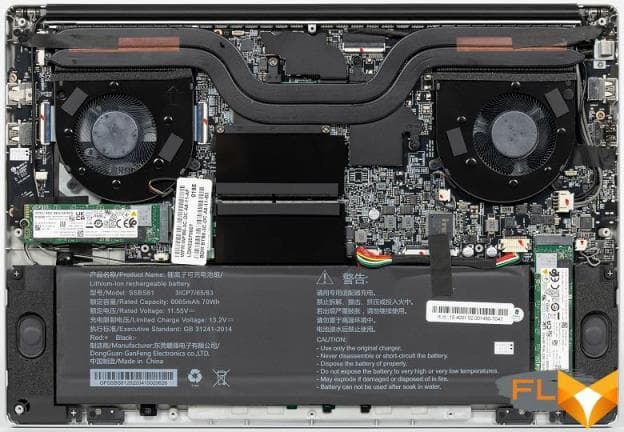
More than half of the inside of the case is occupied by a motherboard with RAM modules in SO-DIMM slots and SSD drives in M.2 slots.
It’s a little harder to see the Wi-Fi module – in our copy it was covered with a sticker.
The rest of the internal space is occupied by a lithium-ion battery consisting of three cells. There are speakers on the sides.
The cooling system contains a pair of heatsinks with fans and two common heat pipes. As already mentioned, air is sucked in through slots in the bottom and thrown back to the bottom of the screen.
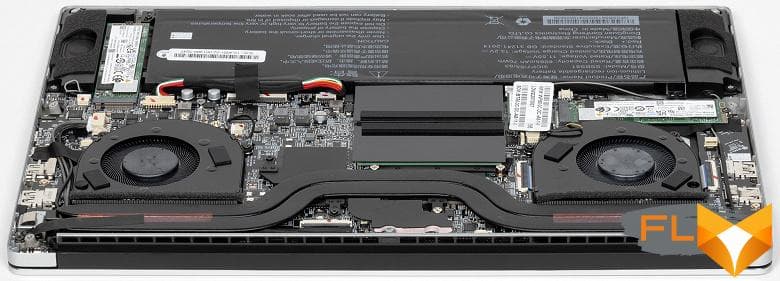
The number of fan speeds cannot be determined from the available observations – the rotational speed is not displayed in any of the utilities we use, and judging by the sound, there are either at least four or five steps, or smooth adjustment is used at all.
To evaluate how the operating parameters of the system components (temperatures, frequencies, etc.) change under different load scenarios, we will give a table (the maximum / steady values are given through a fraction), while the fans automatically change speed as needed.
| Load Scenario | CPU Frequencies, GHz | CPU temperature, °C | CPU Watts | GPU frequency, GHz | GPU temperature, °C | GPU Wattage |
|---|---|---|---|---|---|---|
| Inactive | 27-28 | 4-4,5 | ||||
| Max CPU load | P: 3.4/2.7 E: 2.6/2.1 | 79/69 | 64/45 | |||
| Maximum GPU load | 62/60 | 33.5/31 | 1.45/1.45 | 64/59 | 22/21 | |
| Maximum CPU and GPU load | P: 2.6/2.1 E: 2.0/1.8 | 67/59 | 53/45 | 1.35/1.3 | 64/61 | 14/13.5 |
Now a little more.
When a load (powerMax program) is applied to the processor, its consumption rises to 64 W for a period of just over a minute, the frequency of P-cores – up to 3.1 GHz, E-cores – up to 2.6 GHz, the temperature rises, reaching 79 ° C. The fans increase their rotational speed to the maximum and remain in this mode until the end of the test. Then Turbo Boost is turned off, the listed parameters decrease abruptly and are fixed at the levels of 69 ° C, 45 W, 2.7 GHz and 2.1 GHz. Overheating and throttling is not observed.
We do not see the maximum consumption declared for the processor (115 W in turbo mode).
At maximum load simultaneously on the processor and video card, approximately the same thing happens, but a little stretched in time – the maxima are observed for two minutes, and the processor frequency is lower both at the peak and in the stable state: respectively 2.6 / 2.1 GHz for R -cores and 2.0 / 1.8 GHz for E-cores. The maximum consumption is also lower: 53 W, and in steady state the same 45 W. The temperature regime is even more gentle – no higher than 67 ° C, there is no throttling. For the GPU, the readings are as follows: 1.35/1.3 GHz, 14/13.5 W and 64/61 °C. The fans spin up strongly, but not to the maximum (again, we judge by the sound).
When only the video core is loaded, everything is much calmer, the GPU temperature does not exceed 64 ° C, its frequency is stable at 1.45 GHz (which corresponds to the maximum according to the specification), and the total consumption remains within 33-34 W (for video, the utility shows 21- 22 W), the fans slowly ramp up to medium speed. There are no further changes.
Thus, the processor consumption is limited to a level that is half the maximum possible. Under these conditions, the existing cooling system copes well with its task, preventing overheating and the appearance of throttling.
Below are thermal images obtained after a long-term operation of the laptop under maximum load on the CPU and GPU:
Under maximum load, working with the keyboard is comfortable, since the places under the wrists heat up slightly, and the buttons become only warm.
You can also keep the laptop on your lap without much discomfort, although you can still feel the heat. However, this may block the ventilation grilles, which can lead to subsequent overheating of the laptop.
The power supply gets very hot, so when working for a long time with high performance, you need to make sure that it is not covered with anything.
Noise level
We measure the noise level in a special soundproof and semi-dampened chamber. At the same time, the sound level meter microphone is located relative to the laptop in such a way as to imitate the typical position of the user’s head: the screen is tilted back by 45 degrees, the microphone axis coincides with the normal emanating from the center of the screen, the front end of the microphone is at a distance of 50 cm from the screen plane, the microphone is directed to the screen . The load is created using the powerMax program, the screen brightness is set to maximum, the room temperature is maintained at 24 degrees, but the laptop is not specially blown, so in the immediate vicinity the air temperature may be higher. To estimate the real consumption, we also give (for some modes) the consumption from the network. The battery is pre-charged to 100%.
| Load Scenario | Noise level, dBA | Subjective evaluation | Power consumption, W |
|---|---|---|---|
| Inactive | 21,8 | very quiet | 12 |
| Max CPU load | 42,7 | very noisy | 75 (maximum 92) |
| Maximum GPU load | 36,1 | noisy | 59 (maximum 61) |
| Maximum CPU and GPU load | 39.5 | noisy | 78 (maximum 91) |
If the laptop is not loaded at all, then its cooling system still cannot work in passive mode for a long time. However, in this case, the noise from the cooling system is low, under normal conditions it is indistinguishable against a typical background at home or in the office. Under heavy load, the noise from the cooling system is not very high, although certainly noticeable. The nature of the noise in any case is smooth and does not cause irritation.
The spectrogram obtained for the variant with the maximum load on the processor and video card is quite even, and there are no pronounced peaks in the frequency range where sounds can cause particular irritation (low-frequency peaks can be neglected):
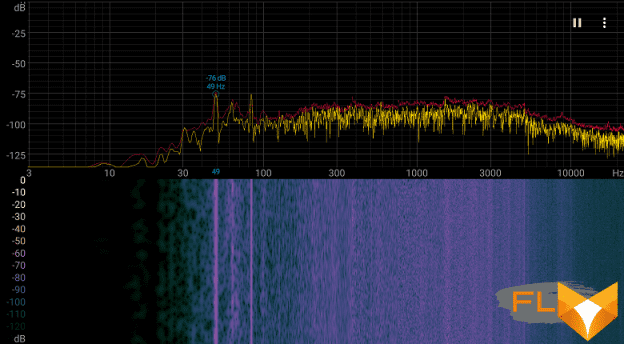
For a subjective assessment of the noise level, the following scale is applicable:
| Noise level, dBA | Subjective evaluation |
|---|---|
| Less than 20 | conditionally silent |
| 20-25 | very quiet |
| 25-30 | quiet |
| 30-35 | clearly audible |
| 35-40 | noisy |
| 40-45 | very noisy |
| 45-50 | loud |
| Above 50 | very loud |
Below 20 dBA, the computer is conditionally silent; from 20 to 25 dBA, a laptop can be called very quiet; 35 dBA noise is clearly audible, 35 to 40 dBA noise exceeds the comfortable level for long-term work, 40 to 45 dBA the laptop is very noisy and needs to be masked by background music, for example, 45 to 50 dBA noise level is very uncomfortable, and 50 dBA and above, the noise is so loud that headphones must be used. The scale, of course, is very conditional and does not take into account the individual characteristics of the user and the nature of the sound.
Performance
The laptop has a new Intel Core i9-12900H processor (codenamed Alder Lake); we already know it from other laptop models, so let’s briefly explain: out of 14 cores, six are Performance cores (P-cores, high-performance), which can work in two threads at frequencies up to 5.0 GHz, and eight more are single-thread energy-efficient Efficient cores (E-cores, up to 3.8 GHz). That is, the maximum number of threads will be twenty – exactly as many logical cores are displayed by the operating system, and various utilities can show something like “6P + 8E”.
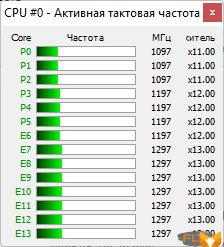
The TDP of the processor is listed as 45W base and 115W turbo, but laptop manufacturers have the ability to change the level of consumption. In testing, we saw that in this case it does not even reach its maximum value for a very short time, remaining within 64 W, but the base level in steady state is quite possible.
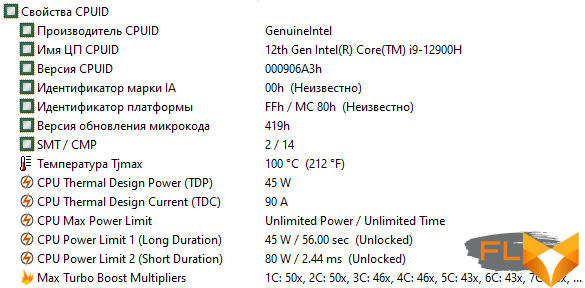
The Iris Xe Graphics video core is integrated into the processor, which is used by the laptop – there is no discrete graphics card.

Although it is possible to install memory modules up to DDR5-4800, in this case the manufacturer decided to save a little and installed two DDR4-3200 SO-DIMMs that operate in dual-channel mode.
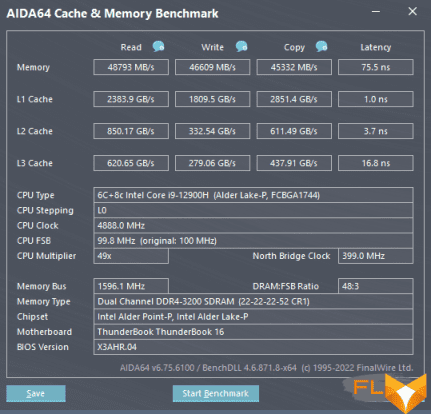
As already mentioned, not one 1 TB SSD is used, but two identical Intel 660p drives with a capacity of 512 GB each with QLC memory and a PCIe 3.0 x4 interface. This is not the most modern model – it has been offered for 4 years, and even at the time of its appearance it was by no means a flagship model, and today the results shown can only be called barely satisfactory (we provide screenshots of the CDM test for both drives, the difference in the values obtained is in understandable limits):
Few people need more than 32 GB of RAM, and the total terabyte of disk space seems to be sufficient. Recall: if you want to save money, then a complete set with 16 GB RAM and a 512 GB SSD is offered, but it’s hard to say in what kind of “packaging” (one SO-DIMM module and one drive or something else) – we didn’t have such a model .
For comparison, in addition to our reference sample, we take two models of laptops. The first is Machenike S17, a gaming device with an external liquid cooling system (of course, we will compare with the results shown without it); it has the same processor as our Tbook, 16 GB DDR5-4800 memory, an Nvidia GeForce RTX 3070 Ti Laptop discrete graphics card and a top-end Samsung PM9A1 PCIe 4.0 x4 SSD. The second is Huawei MateBook 16 Crem-WFD9 of 2022 with a very good AMD Ryzen 7 5800H processor (8 cores / 16 threads, 3.2-4.4 GHz, TDP 35-54 W) and integrated AMD Radeon RX Vega 8 video, RAM 16 GB DDR4-3200, pretty fast SSD WDC SN730 PCIe 3.0 x4.
| Reference result (Core i5-9600K) | Thunderobot Thunder Book 16 (Intel Core i9-12900H) | Machenike S17 without coolant (Intel Core i9-12900H) | Huawei MateBook 16 (Crem-WFD9) (AMD Ryzen 7 5800H) | |
|---|---|---|---|---|
| Video conversion points | 100 | 163 | 204 | 136 |
| MediaCoder x64 0.8.57, c | 132.0 | 70,3 | 58,2 | 92.7 |
| HandBrake 1.2.2, c | 157.4 | 101.6 | 79.4 | 117.7 |
| VidCoder 4.36, c | 385.9 | 265,2 | 204,2 | 294.3 |
| Rendering points | 100 | 194 | 229 | 155 |
| POV-Ray 3.7, c | 98.9 | 48,1 | 40,8 | 65,4 |
| Cinebench R20 | 122,2 | 60,4 | 48,8 | 77.7 |
| Blender 2.79, c | 152,4 | 85,0 | 70,1 | 107.4 |
| Adobe Photoshop CC 2019 (3D rendering), c | 150,3 | 78,7 | 72,2 | 88,1 |
| Video Content Creation Points | 100 | 154 | 162 | 119 |
| Adobe Premiere Pro CC 2019 v13.01.13, c | 298.9 | — | 172,3 | 253,2 |
| Magix Vegas Pro 16.0, c | 363.5 | 231,3 | 272.7 | 402.0 |
| Magix Movie Edit Pro 2019 Premium v.18.03.261, c | 413,3 | — | — | 312.8 |
| Adobe After Effects CC 2019 v 16.0.1, c | 468,7 | 242.7 | 203,7 | 314.0 |
| Photodex ProShow Producer 9.0.3782, c | 191,1 | 159.3 | 146.8 | 172.0 |
| Digital photo processing scores | 100 | 156 | 172 | 97 |
| Adobe Photoshop CC 2019, s | 864.5 | 553,1 | 553,4 | 747.7 |
| Adobe Photoshop Lightroom Classic CC 2019 v16.0.1, c | 138.5 | 77.5 | 90,2 | 155.5 |
| Phase One Capture One Pro 12.0, c | 254.2 | 188.6 | 118,8 | 289.0 |
| Text recognition score | 100 | 206 | 281 | 179 |
| Abbyy FineReader 14 Enterprise, c | 492.0 | 238.8 | 175,2 | 275,4 |
| Archiving points | 100 | 165 | 157 | 121 |
| WinRAR 5.71 (64-bit), c | 472,3 | 292,5 | 320,3 | 391,8 |
| 7-Zip 19, c | 389,3 | 230,8 | 233,4 | 322,0 |
| Scientific calculations, points | 100 | 171 | 204 | 130 |
| LAMMPS 64-bit, c | 151.5 | 91,1 | 75.0 | 102,3 |
| NAMD 2.11, c | 167.4 | 92.4 | 70,4 | 144,1 |
| Mathworks Matlab R2018b, c | 71,1 | 43,4 | 38,7 | 53.7 |
| Dassault SolidWorks Premium Edition 2018 SP05 with Flow Simulation 2018, c | 130,0 | 75,7 | 65,7 | 104.0 |
| Integral result without accumulator, points | 100 | 172 | 198 | 131 |
| WinRAR 5.71 (Store), c | 78.0 | 31.5 | 18,1 | 24,2 |
| Data copying speed, s | 42,6 | 22.0 | 6,1 | 10,1 |
| Integral result of the accumulator, points | 100 | 219 | 547 | 355 |
| Integral performance result, points | 100 | 185 | 268 | 177 |
You can immediately see that the Thunder Book 16’s weak link is the SSD – in the corresponding tests, the results are significantly worse than those of the other two laptops. We have to regret that the terabyte available in our Tbook came from two drives occupying both M.2 slots: if the owner wants to put in a more productive SSD, he can do this only by replacement.
And without taking into account the drive, the results in all tests are much better than a laptop with an AMD Ryzen 7 5800H, but noticeably worse than a gaming device in which the same Intel Core i9-12900H runs at a crazy consumption of 100-105 watts. The reference desktop system with a six-core processor is far behind, although it cannot be called weak.

The Thunderobot Thunder Book 16 is not a gaming laptop, but we did test it with a couple of games at three resolution settings and different quality levels. The table shows the average (minimum in brackets) frame rates.
| Game and Resolution | Low quality | Medium quality | High quality | Maximum quality |
|---|---|---|---|---|
| 2560×1600 | ||||
| World of Tanks *) | 172 (87) | 40 (26) | 20 (13) | |
| Far Cry 5 | 18 (16) | 16 (14) | 15 (13) | 14 (13) |
| 1920×1200 | ||||
| World of Tanks | 244 (131) | 69 (46) | 33 (23) | |
| Far Cry 5 | 29 (27) | 26 (24) | 23 (21) | 22 (20) |
| 1280×800 | ||||
| World of Tanks | — | — | 64 (40) | |
| Far Cry 5 | 51 (45) | 45 (40) | 42 (38) | 39 (35) |
*Three main quality gradations are available for World of Tanks, four for Far Cry 5.
The results turned out to be the most typical for laptops with integrated Intel graphics: with the resolution declared for this model, even undemanding “tanks” can be played only with minimal settings, you can get comfortable values (from 60 fps on average and 30 fps minimum) for average quality only by significant reduction in resolution, and for the maximum possible quality, the resolution will have to be reduced very, very much.
For Far Cry 5, even with minimal quality, it was not possible to cross the border of conditional comfort at the specified resolutions.
Conclusion
As usual, there was no clear opinion about the Thunderobot Thunder Book 16. The first impression after unpacking and switching on is quite pleasant: a silver metal case with a good design, moderate weight, a high-quality screen with a decent diagonal and a thin frame, five USB ports, two of which are Type-C. The amount of RAM is such that the vast majority of potential buyers will not have to wish for more, and a terabyte in the form of an SSD is quite an impressive amount.
But upon closer examination, there were also reasons to be upset: the memory could be faster, the drive is not one with the possibility of adding a second one, but occupying both M.2 slots, two 512 GB each, and far from the most “quick-firing”.
The battery was not pleased either: the autonomy of the laptop is far from outstanding, and the charge time is not record-breaking short. True, there is no strong chagrin on these occasions: the values are quite average. In addition, it is not necessary to carry a PSU from the kit with you – you can use an adapter with support for 20-volt Power Delivery mode for both charging and operation by connecting it to any of the Type-C connectors, and if you do not expect to start “heavy” tasks , then a power of 60 W (20V @ 3A) will be enough.
The results in application tests are very good, although not record-breaking. The processor does not even reach its nominal maximum, not to mention overclocking, but the cooling system copes with its task quite well, preventing even a short-term overheating. Unless the noise level is not the lowest (but, of course, it is noticeably lower than that of gaming laptops).
In games, the device performed frankly poorly, but there are no complaints here: you can’t expect anything else from a laptop with integrated graphics.
Little things spoil the mood: the presence of official information exclusively in Chinese and the bugs we noticed, which are unpleasant mainly because they appeared at the “just out of the box” stage, and therefore do not bring up the most optimistic expectations regarding the future; Potential buyers can only hope that we are the only unlucky ones.
We won’t characterize the price of the laptop in any way, and we’ll just say that there are cheaper options – not only with half the amount of RAM and SSD, but also with a 14-inch screen.

